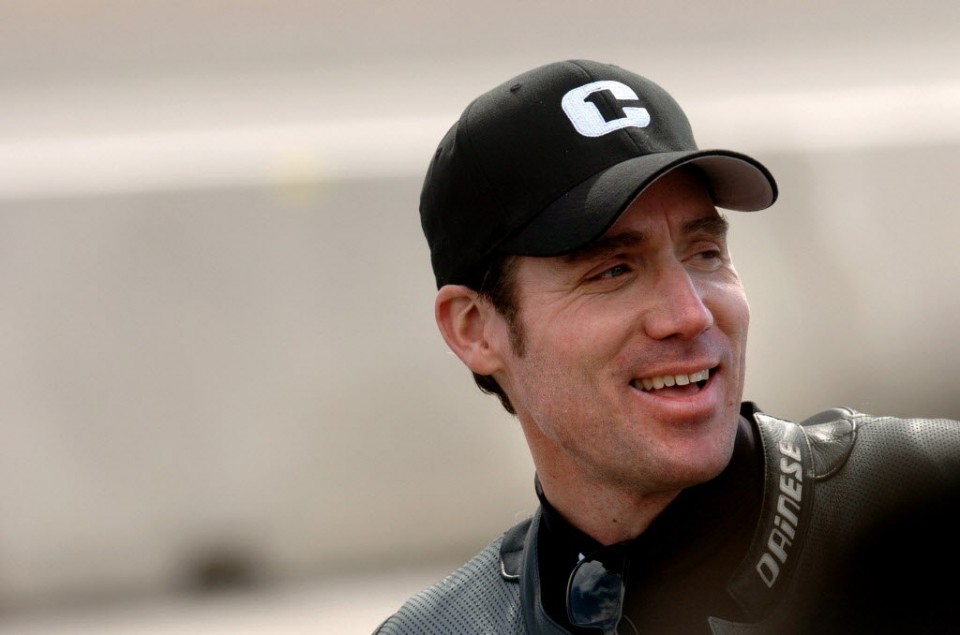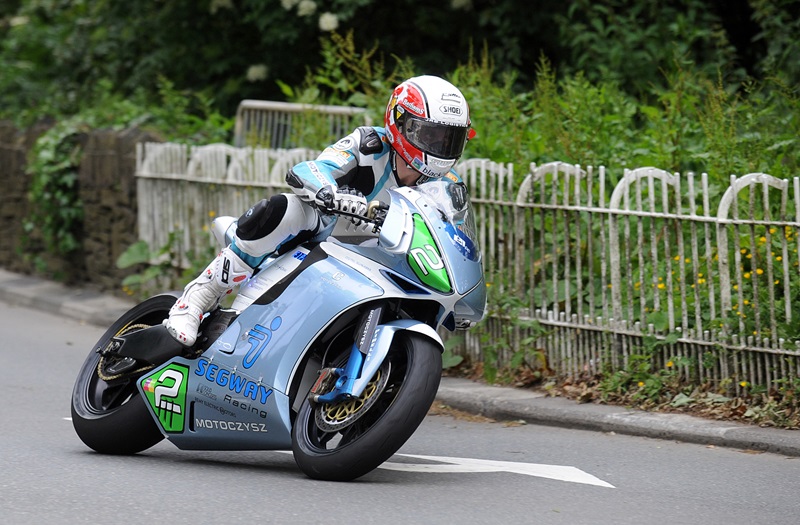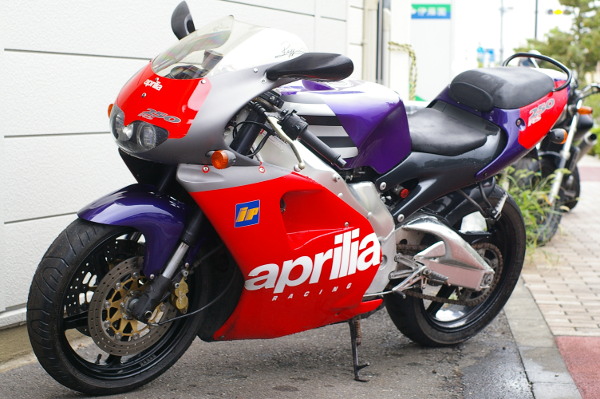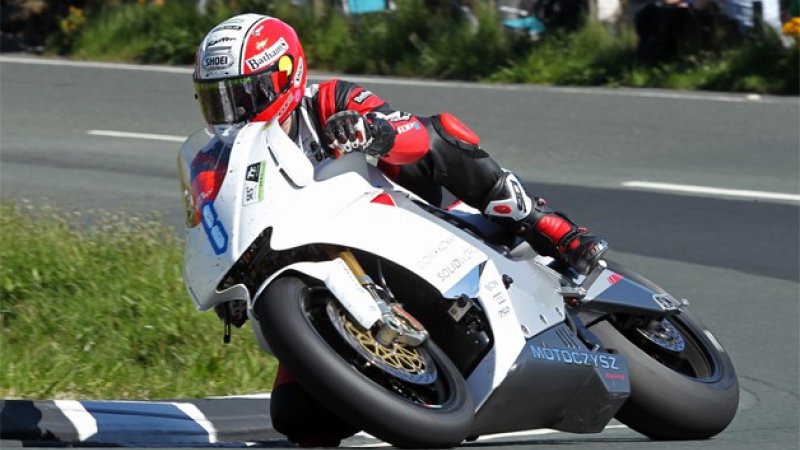Michael Czysz
An Appreciation
John Newman
Among the few things that stood out from my early years of education was the impression, notion, and historical fact that the world is shaped by clever and talented individual scientists, engineers, mathematicians, inventors, explorers, philosophers etc. They were all 'great' men, and it wasn't until later in life that I became aware that women could and did achieve in these areas of human endeavour too.
There are, of course, many talented and exceptional individuals whose achievements can now be recognised and communicated instantly and constantly through the never ending torrent of information and knowledge invading our consciousness. So much out there. How can we assimilate it all?
Even in the sphere of interest that is motorcycling - a small world in the great scheme of things - it can be a struggle to keep abreast and ahead of all that is happening across the scale and extent of activity and information.
"this is my adventure bike, I can go anywhere in the world with it"
I remember reading about Michael Czysz (pronounced 'sis' as in sister) a few years ago. He was developing a racing motorcycle named MotoCzysz in Portland, Oregon. A radical new machine that, in its early form, promised to be that exceptional thing: a bike that could challenge the hegemony of the established corporate race teams and bikes. It then disappeared from my view. I couldn't remember why, but then Czysz bikes re-appeared at the Zero TT, and won the race four years in a row from 2010 to 2013. Michael, however, was unable to travel with his team to the Isle of Man and share their success in 2013. He was fighting a rare form of cancer and had to remain in Portland for treatment.
Michael Czysz died of cancer earlier this month at the age of fifty-two. Cutting short a life of talented design, architecture and motorcycling development genius and invention that is unique.
Michael was introduced to motorcycles as a youngster. Riding his first bike at four years and then going on to discover the freedom of a Kawasaki 175 enduro bike when he was older; "this is my adventure bike, I can go anywhere in the world with it".
Architropolis
This first phase of motorcycling was put on hold while he followed studies at design school in New York. He launched his own design company on returning to the west coast, Los Angeles, and although he didn't study architecture he gained a reputation for designing houses and buildings, soon becoming the 'go-to' man for LA celebrities.
Bikes were never far away, even when building up his business, Architropolis. He owned a series of BMWs but soon found their performance was not what he was looking for, and instead went on to find this is a series of other bikes: Ducati Paso, Ducati Paso, Suzuki GSXR750, and Honda VFR750.
Speed took over. He became enamoured with the Aprilia RS250 - his design instincts immediately connecting with the clean flowing Italian design concepts. This Aprilia wasn't on sale in the USA so he imported his own and at the age of 30, went racing. He then purchased another Aprilia, the AF1 125cc, and had some racing success. An ex Max Biaggi 250 followed, which he found difficult to ride, but contacted Freddie Spencer, who helped and they became friends.
Czysz never really connected with the Biaggi bike, and this coincided with a time in his life when his design/architecture company was really taking off. He had two kids to help bring up too, so bikes and racing had to go while he concentrated on life's other tasks and responsibilities.
Czysz C1
Now in his forties, and with a successful business, Michael Czysz's thoughts turned to bikes again, and specifically to why a competitive racer/sports bike was not designed and built in the USA. He was an admirer of the New Zealand bike designer and builder John Britten (who also died young from cancer). His Britten bike, designed, engineered and constructed by him, put in some accomplished performances at the TT too.
Czysz was now a wealthy man but decided to use some of these resources to design and build his own superbike. He was convinced that two things would happen to GP race bikes in the future; they would rev higher, and lean angles would be greater. Working on these assumptions the initial engine design and construction was a longitudinal unit, rejecting the conventional across-the-frame-four option. It made the bike very narrow, more aerodynamic, and, in theory, quicker to steer in terms of side to side transition.
However, once the intake was brought in and the exhaust put out at the correct angles, the engine was as wide as an across-the-frame unit. Czysz was never likely to be stumped by a problem such as this and turned his attention to creating a narrow V design which he adopted and went ahead to produce, with the initial aim of entering the bike into the World Superbike (WSB) series. One unexpected spin-off for Czysz was the sound it made: “It had a very American heavy kind of V8 sound, but revved ridiculously fast to 16,000 revs”.
Nowhere else to go
At this time, the homologation rules for WSB required 150 bikes to be built and sold, with 15 sales required in the first year. Michael was convinced he could build and sell 15 Czysz C1 bikes but was then thwarted by a rule change upping the homologation build to 1500, with 150 units of sale in a year. Out of the question.
He then cast his eyes towards Moto GP where a field full of four-stroke prototypes would be the place where the C1 might make its mark. A 990cc engine was achievable, but just as he was about to make a decision to go down this route, a Moto GP engine limit of 800cc was introduced. They would need to be higher revving motors requiring pneumatic valve technology. Finance dictated decisions. They would not be able to develop concurrent technologies, pneumatic for the track and conventional valves for homologated street bikes. There was nowhere else to go.
When Michael Czysz first considered electric bike development it didn't appeal that much. But his design, development and modernist instincts took over and he committed himself to designing and demonstrating the capabilities of an electric powered race bike on the toughest of courses: the Isle of Man TT.
The birth of the electric superbike
Initially using a modified frame from the C1 bike he knew he wanted to achieve massive torque and acceleration through a single gear. He would also need exceptional battery power, which was achieved in partnership with a US company called Dow Kokam, who are among the leaders in battery technology. Between them, they developed battery power for the new electric bike, the E1, that was described as 'energy dense' and could be run almost to the point of thermal meltdown.
Czysz then made a carbon fibre frame for the E1 and was ready to take on the Zero TT world; gaining four consecutive victories battling with Mugen mounted John McGuiness who were backed by the mighty resources of Honda against the E1 team of five. Michael Czysz said of their third victory:
“We bought our third new bike and Michael Rutter did a 99.8 mph average, crossing the line at 120mph. He scared the shit out of people who had never seen an electric bike go that fast! He came flying by so fast we thought the throttle was stuck open. It was unbelievable. The TT Zero race went from being a joke to something really interesting in three years. This was really the birth of the electric superbike”.
Michael Czysz was one of those people that wanted to and did make things happen - he was already talking about hybrid engines for road (street) bikes. The world and motorcycling have lost an individual who, had he been with us longer, would no doubt have shown the way forward with many other innovative technologies.





